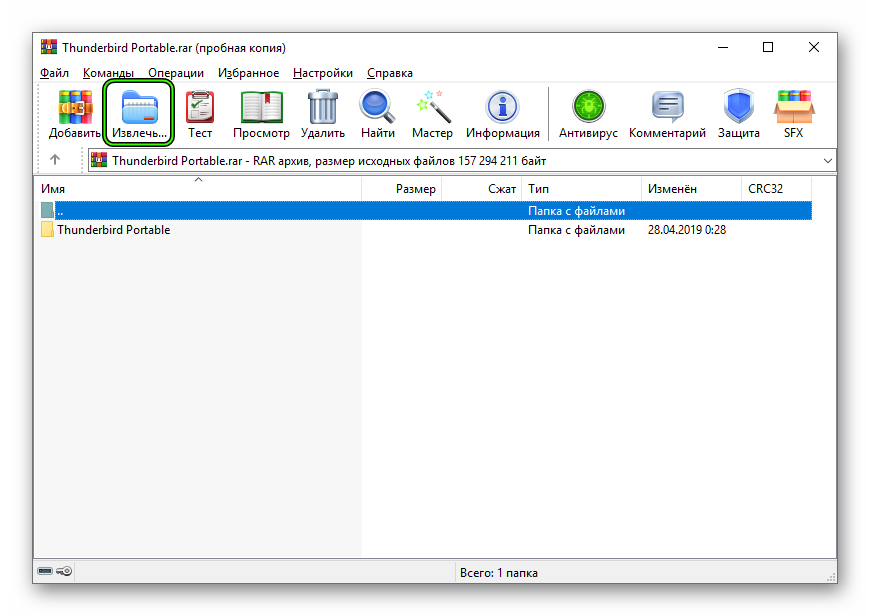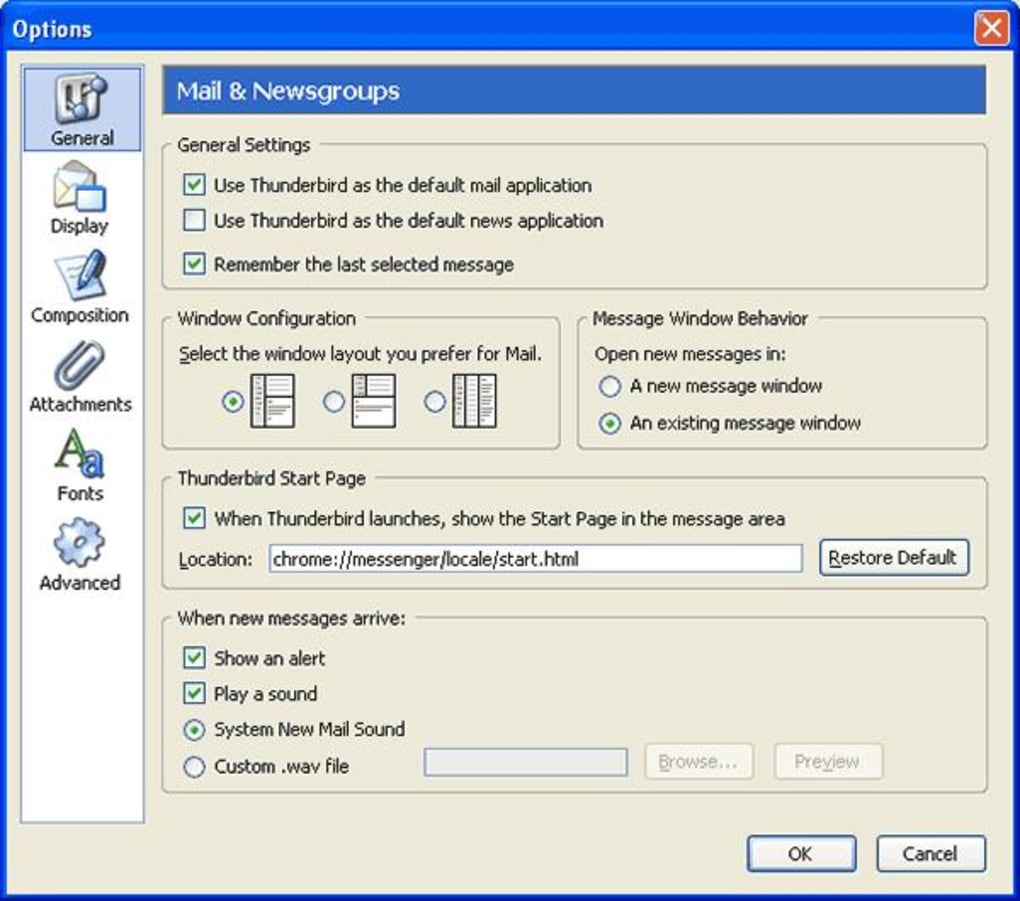If you want Thunderbird to be the default email application, click Yes to set it as your default mailer. If not (for example if you are just trying out Thunderbird) click No. The Installing Thunderbird on Mac OS X chapter in the Thunderbird FLOSS manual The Uninstalling chapter in the Thunderbird. この記事は、Thunderbird を Mac にインストールする方法を紹介します。他のオペレーティングシステムについては、Thunderbird を Windows にインストールする および Thunderbird を Linux にインストールする の記事をご覧ください。. Portable Thunderbird OS X is the popular Mozilla Thunderbird e-mail client packaged as a portable application, so you will be able to take your e-mail, address book and account settings with you. It works fast and easy on Mac Operating System X 10.4 or later.
Thunderbird was created by Mozilla in 2004. It is a free, open-source email client that can be downloaded at Thunderbird.net.

If you need help finding your username and other configuration settings, see our article, Setting Up an Email Reader.
Thunderbird Portable Email
Setting up your Email for Thunderbird on OSX

- Go to Applications in Finder and open the Thunderbird application
- In the left sidebar, click Local Folders
- Under the Accounts section, click Email
- A pop-up will appear. On this pop-up, enter the following information:
Your Name The name that will display on the email address Email Address The email address you want to add to the email client Password The password for the email address. Note that this is not the password for your hosting account. - Select IMAP or POP. For more information about the difference between IMAP or POP, see our IMAP vs POP article.
- Click Manual config
- Under the Server hostname, enter the incoming and outgoing servers. For more information about how to find your mail servers, see our article: How to Find Your Email’s Incoming and Outgoing Servers
- Under SSL, select SSL/TLS
- In the text field next to Username Incoming and Outgoing, enter your ACC username
- Click Done
If all the information is correct, your email address will be added to the Thunderbird email client.
- Go to Applications in Finder and open the Thunderbird application
- In the left sidebar, click Local Folders
- Under the Accounts section, click Email
- Click Skip this and use my existing email
- On the next page, enter your display name, email address, and email address password, then click Continue
- Choose between IMAP or POP. For more information see our IMAP or POP: Which One Should You Use? article
- Click Manual Config
- Replace the Incoming and Outgoing Server hostnames with your mail server. For help finding your mail servers, see our How to Find Your Email's Incoming and Outgoing Servers article
- Replace the Username with your account username
- Under SSL, select SSL/TLS for both incoming and outgoing
- Click Done to finish
If the Done button is grayed out, click the Re-test button first. If your information is entered correctly, the Done button will become clickable.
- Go to Applications in Finder, and open up the Thunderbird application
- Under Create a new account: click Email
- Click Skip this and use my existing email
- Add your name, email address, and password and click Continue
- Choose between IMAP or POP. For more information see our IMAP or POP: Which One Should You Use? article
- The application will automatically scan for incoming and outgoing email servers and display them and your username below. If these details are correct, skip to Step 11.
- If these details are incorrect, click Manual Config, then click Advanced Config to change them
- Next to Server Name, input the email's server name
- Next to User Name, input your username followed by its full domain name
- Example: username@domain.com
- Under Outgoing Server (SMTP) choose your email from the list and click Edit
- In the User Name field, type your username followed by its full domain name
- Example: username@domain.com
Note: Make sure the Server Name matches the server name you entered earlier
- Example: username@domain.com
- Click OK to finish

Using SSL to Secure Your Email
Pair Networks provides support for SSL/TLS and STARTTLS encryption for all IMAP, POP, and authenticated SMTP connections. Using encryption is an important way to prevent your password from being stolen.
POPS/IMAPS only secures the connection between your email reader and the mail server. Once it reaches the mail server, it will be in plain text. For additional security, you would need to encrypt the email message itself. The port for POPS is 995, the port for the IMAPS is 993, and the ports for encrypted authenticated SMTPAUTH are 465 and 587. These are the standard ports for these services, and you should not need to manually set them.
Please note that we replaced the secure certificate used to provide POPS, IMAPS, and SMTPS email services (sending and receiving email over SSL). Our SSL certificate vendor has changed to a new 'root' certificate, which is recognized by most, but not all, email programs. If your email program begins returning errors and indicates that the server certificate is not recognized, please download the root certificate below and install it in your email program. The specifics of how to install a certificate will vary from program to program -- please consult the help files of your program for details.
Please also note that our mail servers use an SSL certificate. If you use this SSL option in conjunction with a domain name, your email reader may warn you that the domain names do not match. Some email readers will allow you to ignore this warning. In these cases, your incoming email will remain secure.

However, some email readers will not let you proceed if the security certificates do not match. If this occurs, please verify your incoming server settings as follows:
For accounts created prior to June 1, 2011:
mailX.pair.com
(where X is your server number)
For accounts created on or after June 1, 2011:
username.mail.pairserver.com
(where 'username' is your main account username)
Was this article helpful?
Related Articles
Thunderbird stores your data in a separate location, away from the program filesapplication, called your profile folder. To move your data, copy your profile folder to the equivalent location on your destination computer.
- Click on the menu button , then go to Help and select Troubleshooting Information.Go to the Help menu and select Troubleshooting Information.
- Click on . Your Thunderbird profile folder will open in Windows ExplorerFile BrowserFinder.
- CloseQuit Thunderbird.
- From your Thunderbird profile folder, go up three levelsgo up two levelsopen the Go menu and select Enclosing Folder two times.
- Right-clickHold down the control key while you click on the Thunderbird.thunderbird folder, and select CopyCopy 'Thunderbird'.NOTE: .thunderbird is a hidden folder. Make sure you have Linux set to show hidden files.
- Go to the drive you are using to transfer your data, then right-clickhold down the Ctrl key while you click inside the drive, and select PastePaste Item.
- On your destination computer, right-clickhold down the Ctrl key while you click on your backup Thunderbird folder, and select CopyCopy 'Thunderbird'.
- Open Thunderbird, and close the account setup window if it appears.
- Click on the menu button , then go to Help and select Troubleshooting Information.Go to the Help menu and select Troubleshooting Information.
- Click on . Your Thunderbird profile folder will open in Windows ExplorerFile BrowserFinder.
- CloseQuit Thunderbird.
- From your Thunderbird profile folder, go up three levelsgo up two levelsopen the Go menu and select Enclosing Folder two times.
- Right-clickHold down the control key while you click inside the folder, and select PastePaste Item.
- When prompted, choose to replace your current data.
Thunderbird For Macbook
